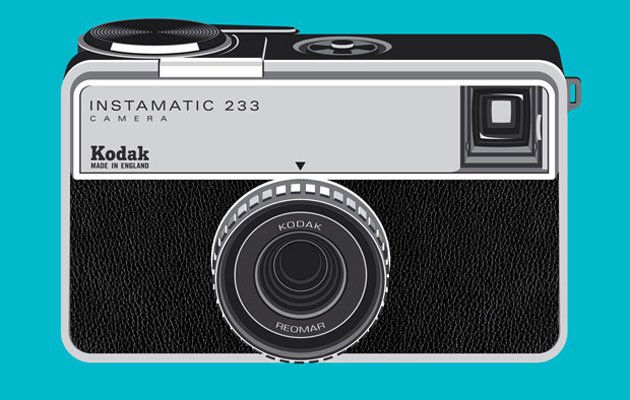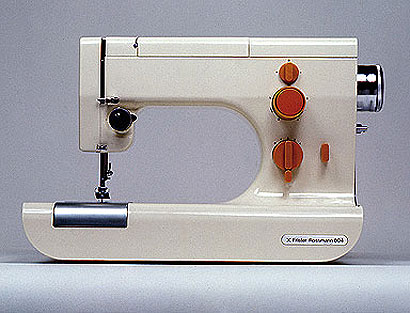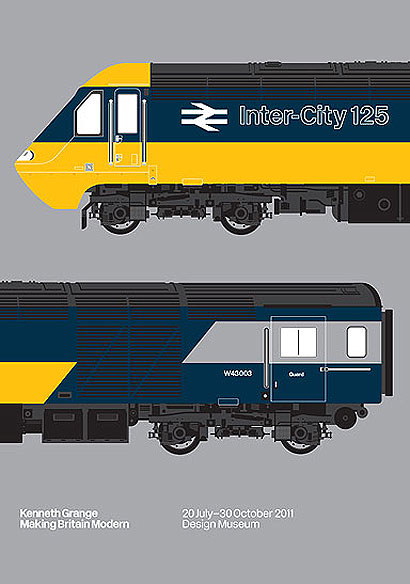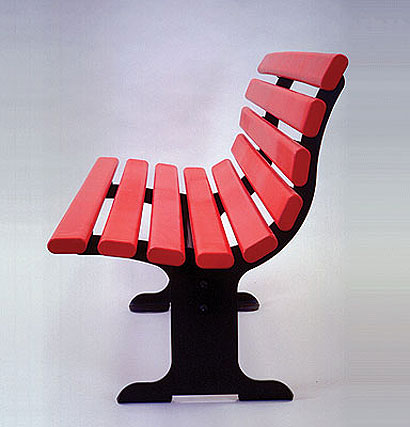|
|
||
|
The Design Museum’s show devoted to Kenneth Grange says as much about postwar Britain as it does about the legendary designer “We used to make shit in this country. Build shit.” This character in The Wire was talking about the US, but it could just as easily have been the UK, former workshop of the world, now offshore tax haven with added sideline in property speculation and vibrant poverty-porn. Making Britain Modern is a collection of mostly mass-produced consumer goods and street furniture, which unintentionally doubles as a snapshot of industrial Britain’s last moments. Kenneth Grange, a long-time member of Pentagram and designer in his own right, is the kind of figure often overlooked by design history – his designs are undemonstrative and unspectacular, several leagues away from the high-end spectacle of much contemporary design. His work here, for Kenwood, British Rail, Wilkinson Sword and others, is quiet, modern and instantly accessible, to the point where it feels strange looking at these toasters and food mixers in the Design Museum’s 1980s mock-Corbusian white cube. There’s a story of decline here, too, though. Grange was no trend-setter and his work seems at its best when the general standard was best, and falls when the standard falls. We begin with drawings for the designer Jack Howe, from the early 1950s. The most eye-catching are of an exhibition on the peaceable use of atoms (risible to a contemporary CND member, but perhaps something we have to think about again); and of a bus shelter design for London Transport. The latter is a beautiful sketch of a wooden shelter, surrounded by lush autumnal parkland. Designed for “metroland”, the area just outside north-west London, it could be in the suburbs of Stockholm. This is an image that sticks in the head throughout the rest of the exhibition – its improbability matches its loveliness. After that, it’s an assemblage of familiar consumer durables, mostly for Kenwood. Those food mixers and kettles evoke Swiss aesthetics in the 1950s to design aficionados, or the contents of a charity shop to others. It must be admitted that this stuff is of greatest interest when most obsolete. Two cute rectilinear heaters, designed before central heating became the norm, evoke a minor Proustian rush; the razors, fountain pens and toothbrushes don’t, because they are still in use.
Yet the major attraction of this exhibition is Grange’s early 1970s design for the Intercity 125 train. One of the most telling failures of postwar Britain was its refusal to maintain decent public transport, which was ransacked and destroyed rather than redesigned and expanded. Everything was staked on the car, and the legacy of the Beeching report – which aimed to reduce the cost of the railway – has not been overcome. There are a handful of decent examples of postwar transport design among disasters like Birmingham New Street. There’s Coventry rail station, the Tyneside Metro, London’s Victoria and Jubilee lines – and the Intercity train, which Grange completely redesigned from a clumsy original, altering its casing and aerodynamics as much as its livery. It’s still an excellent piece of design – its uniform-like blue and yellow neatly symbolic of its staff and function, its sleek and sharp shape still rather thrilling. It is sad and symptomatic that this exhibition runs at the same time as train manufacturer Bombardier is forced to make mass redundancies and the UK’s last railway yards enter a decline.
Comparing this with our imported Pendolinos, where the only British contribution is smug post-Madchester colour schemes, is heartbreaking. But look, too, at the three Intercity posters next to the models and murals of the trains: one smart modernist design and two risible pieces of kitsch. By the 70s, industrial design of this standard was already a remnant. There’s a decline after this: a fiddliness and wilfulness creeps into later kettles and mixers. It’s seldom tacky, but clunkiness starts to dominate. That’s especially apparent in Grange’s 1997 design for an Adshel bus stop. It’s impossible not to compare it with the drawing at the start of the exhibition. The first was an optimistic and humane piece of design, totally integrated with its environment. Meanwhile, the later drawing is of an interchangeable, bouncy, jolly advert with a shelter attached, everything subordinated to the needs of Clear Channel.
Kenneth Grange: Making Britain Modern is at the Design Museum, London until 30 October 2011. |
Words Owen Hatherley
Image Design Museum |
|
|
||























